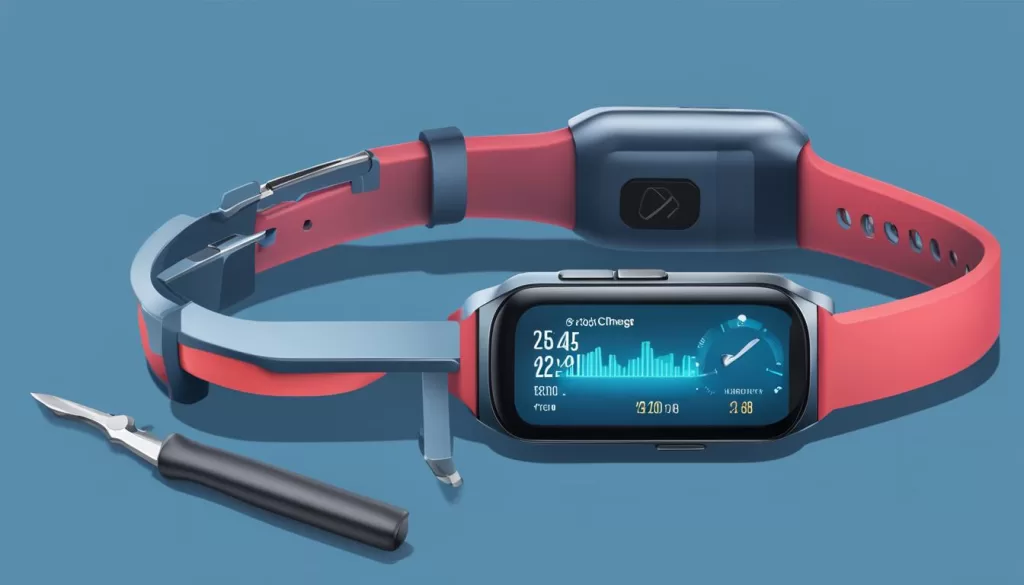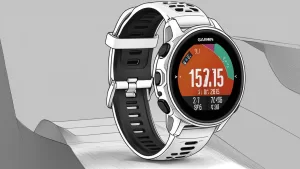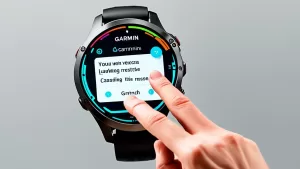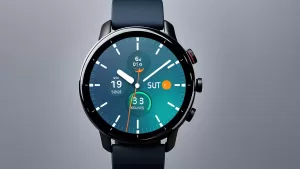If you own a Fitbit Charge 4 and find yourself constantly struggling with a draining battery, you’re not alone. Many users have experienced this frustrating issue, but fear not – there are practical solutions to fix the battery drain problem and ensure you get the most out of your device.
In this article, we’ll explore common causes of battery drain on the Fitbit Charge 4 and provide troubleshooting tips to optimize its battery usage. Whether you’re a fitness enthusiast or a casual user, understanding these strategies can help you extend the battery life of your Fitbit and keep it running smoothly.
So let’s dive in and discover how you can put an end to the Fitbit Charge 4 battery drain and enjoy uninterrupted activity tracking.
Key Takeaways:
- Experiencing fast battery depletion on your Fitbit Charge 4? There are solutions to fix it!
- Understanding the common causes of battery drain can help you troubleshoot effectively.
- Optimizing battery usage involves firmware updates, adjusting settings, and following proper charging practices.
- Regularly restarting your device and keeping it clean can contribute to healthy battery performance.
- When all else fails, seeking support from Fitbit or considering a battery replacement may be necessary.
Common Causes of Fitbit Charge 4 Battery Drain.
Before we dive into the solutions for fixing Fitbit Charge 4 battery drain, it’s essential to understand some common causes that can contribute to your device’s battery depletion. By identifying these issues, you can effectively troubleshoot and optimize the battery life of your Fitbit Charge 4.
Firmware Glitches: Outdated or glitchy firmware can cause your Fitbit Charge 4 to drain its battery quickly. Keeping your device’s firmware up to date is crucial for optimal performance and battery life.
Background App Usage: Certain apps running in the background can consume a substantial amount of battery power. It’s important to monitor and limit the number of apps running simultaneously on your Fitbit Charge 4.
Screen Brightness Settings: Higher screen brightness settings, especially if kept at maximum levels, can significantly drain the battery of your Fitbit Charge 4. Adjusting the screen brightness to a lower setting can help conserve battery life.
Continuous Heart Rate Monitoring: The Fitbit Charge 4’s continuous heart rate monitoring feature is useful for tracking your fitness levels. However, it requires a constant connection and can lead to quicker battery drain. Disabling this feature when not needed can help extend your device’s battery life.
Now that you are aware of these common causes, let’s move forward to the troubleshooting steps to fix Fitbit Charge 4 battery drain in the next section.
Troubleshooting Fitbit Charge 4 Battery Drain.
Now that you’re aware of the potential causes, let’s move on to troubleshooting steps. Here are some effective ways to troubleshoot Fitbit Charge 4 battery drain and extend its battery life:
1. Update to the latest firmware: Start by ensuring that your Fitbit Charge 4 is running on the latest firmware version. Updates often include bug fixes and performance improvements that can help optimize battery usage.
2. Check app settings: Open the Fitbit app on your smartphone and navigate to the settings menu. Disable any unnecessary features like automatic exercise recognition or connected GPS, as these can drain the battery significantly when enabled.
3. Reduce screen brightness: Lowering the screen brightness on your Fitbit Charge 4 can have a noticeable impact on battery life. Adjust the brightness level to a comfortable but lower setting to conserve power.
4. Use Always-On Display sparingly: The Always-On Display feature can be convenient but can also contribute to battery drain. Consider using it sparingly to save power when you don’t need constant access to the screen.
5. Disable continuous heart rate monitoring during workouts: Continuous heart rate monitoring during workouts can put a strain on the battery. If you’re not concerned about tracking your heart rate during exercise, consider disabling this feature to extend battery life.
By following these troubleshooting steps, you can optimize the battery usage of your Fitbit Charge 4 and enjoy longer battery life. Remember to regularly check for firmware updates and adjust your settings to suit your needs while conserving power.

Optimizing Fitbit Charge 4 Battery Usage.
To further optimize the battery usage of your Fitbit Charge 4, you can try some additional measures. By following these tips, you’ll be able to maximize the battery life of your device and ensure it lasts throughout your day.
First, minimize the number of alarms and notifications on your Fitbit Charge 4. Alarms and notifications constantly prompt your device to light up and vibrate, which can contribute to battery drain. By disabling unnecessary alerts, you can help conserve battery power and make it last longer.
Another effective way to optimize battery usage is by using the battery saver mode. When you know that you won’t have access to a charger for an extended period, enabling the battery saver mode can help extend the battery life of your Fitbit Charge 4. It temporarily reduces certain features and functionalities to conserve power and ensure your device lasts longer.

Lastly, it’s crucial to follow proper charging practices to enhance the long-term performance of your Fitbit’s battery. Always use the designated charging cable that came with your device to ensure compatibility and prevent any potential damage. Avoid overcharging your Fitbit Charge 4, as this can lead to reduced battery life over time. By charging it until it reaches 100% and then promptly disconnecting it from the charger, you can optimize the battery’s longevity and maintain its overall health.
Additional Tips for Battery Health and Longevity.
While troubleshooting and optimizing your Fitbit Charge 4 can help improve its battery life, there are a few additional tips you can follow to maintain healthy battery performance.
Firstly, regularly restarting your device can clear temporary files and refresh the system, potentially enhancing battery life. By doing this simple step, you can ensure your Fitbit Charge 4 operates at its optimal capacity.
It is also important to avoid exposing your device to extreme temperature conditions. High heat or cold can negatively impact the battery’s performance and overall lifespan. Likewise, keeping your Fitbit clean and dry helps prevent any damage to the battery and ensures its longevity.
If you continue to experience significant battery drain despite troubleshooting and following these tips, it might be necessary to reach out to Fitbit support. They can provide further assistance and guide you through more advanced solutions. Alternatively, if your device’s battery is no longer holding a charge, considering a battery replacement could be a viable option to restore its functionality.







